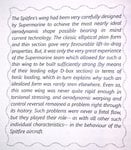David Fred
Airman
- 46
- Feb 7, 2018
Thanks. Now that I am getting on a bit, I find the time to buy and read these specialist books, and this is a good one, not cheap, and supposedly in "layman's terms" (layman what I can't imagine).
From the same book, this photo from a WW2 secret diagram of a Mk1 Spitfire hit probability against an He-111.
The dotted lines represent that 100% of rounds landed within that area, the solid lines, 70%..
Top to bottom, 100, 200, 300, and 400 yards, with the guns harmonized at 350 yards.
Also, elsewhere in the book they mention that dispersion increased greatly in a hard turning, high G fight, because the Spitfire thin wing was subject to torsional effects, which had less effect on the inboard Guns, but quite a lot on the outboard guns.
In fact, as you read below, from "Fighter Aircraft Performance Of WW2: A Comparative Guide", by Erik Pilawskii.
It speaks to why so many pilots who had flown both the Hurricane and Spitfire praise the Hurricane as a "more stable gun platform."


